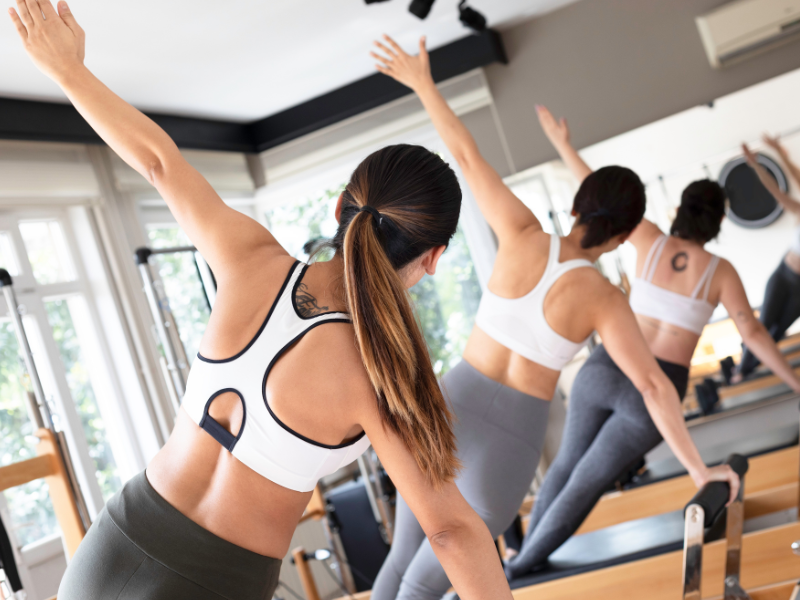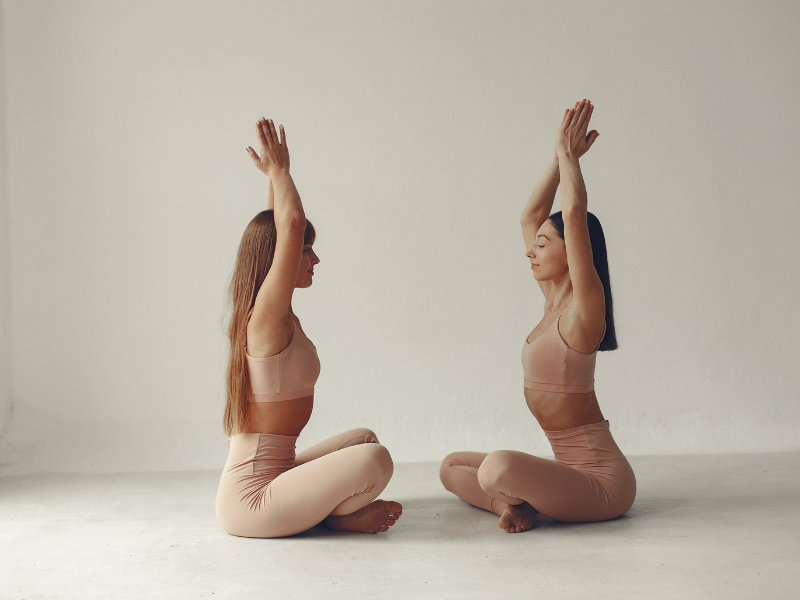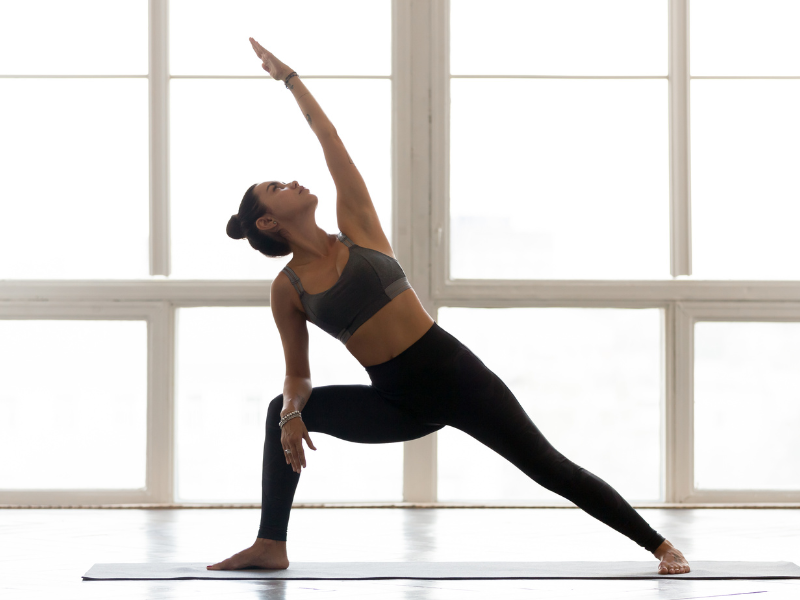


In today’s modern world of hustle and bustle, Pilates and yoga are two practices that have blown up for the mental and physical benefits they provide. They’re both low-intensity exercises but have distinct approaches, so how do you choose which suits you the best? In this article, we help you make this choice by breaking down the workout styles. So read more to find the perfect match for your fitness goals and lifestyle!
Understanding Pilates

Pilates was created in the early 20th century by Joseph Pilates as a low-impact workout style for improving core strength, flexibility, and body alignment. It was initially developed to help with rehabilitation for injured soldiers, and since then, its fame has spread far and wide for improving muscle tone and toning the body in general. Pilates focuses on small, controlled movements where your own body weight is used as resistance to engage stabilizing muscles, especially the back and core muscles [1].
There are different kinds, like mat Pilates, which just requires a mat, to reformer Pilates that uses specialized equipment in the form of a reformer machine. Pilates exercises can be easily modified to suit individuals from all fitness levels and are particularly helpful for the injured or those with conditions like arthritis, back pain, and joint troubles. It also emphasizes breath work and form, which helps with improving balance and endurance. Practicing regularly under the guidance of a pilates instructor can lead to long-term benefits, including injury prevention, rehab, and better physical well-being.
Learn more about Pilates:
Mat Pilates Workout For A Stronger and Leaner Look
Pilates Reformer Workout Plan PDF
Understanding Yoga

Yoga is a centuries-old ancient spiritual practice that began in India and was originally created to bring harmony between the mind, body, and spirit. It blends movement, breathing techniques, and meditation, and is grounded in principles like mindful living, relaxation, and mental clarity. While its roots are spiritual, many people today turn to yoga for its physical and emotional benefits, from reducing stress to improving flexibility and overall well-being [2].
There are many styles of yoga, each offering something different. Some, like Vinyasa Yoga or Power Yoga, are more fast-paced and energetic, while others, such as Hatha Yoga, Restorative Yoga, or Yin Yoga, move slowly and focus on deep stretching and breathwork. Hot yoga amps up the intensity as it plays with the environment in which you do your workout [2]. Whether you’re looking to build strength, recover from injury, or simply find a moment of calm, yoga offers a practice that can be tailored to fit your needs and lifestyle.
Learn more about the yoga practice:
The Ultimate Guide to Somatic Yoga and its Exercises
Yoga Mat Workout Guide: 10 Exercises You Can Do With a Yoga Mat
Pilates vs Yoga: Key Differences
While Pilates and yoga are often grouped together, they have distinct goals and origins. Yoga is rooted in spirituality and designed to unite the mind, body, and breath. Yoga focuses on inner awareness, meditation, and mindful breathing, with movement serving as a tool for physical balance and emotional clarity. In contrast, Pilates was developed in the early 20th century by Joseph Pilates as a rehabilitation method for injured soldiers. It focuses on building core strength, precise body control, and improving posture through intentional, low-impact movements.
The main difference between the two practices is also in pace and structure. Pilates tends to be more dynamic and faster-paced, often involving repeated movements and specialized equipment like reformer machines for added resistance. Yoga, on the other hand, usually follows a slower, more meditative flow, with poses held longer and props used for support or alignment. While both strengthen the body and encourage mindful movement, yoga leans into spiritual growth and mental stillness, whereas Pilates prioritizes physical conditioning and muscular stability. Despite their differences, both offer valuable health benefits—like reduced stress, better flexibility, and heightened self-awareness—making them complementary practices for overall well-being.
Physical Benefits of Yoga and Pilates

Yoga and Pilates both offer a wide range of physical benefits, though they do so in slightly different ways. Pilates emphasizes core strength, body control, and precise movement, which helps tone muscles without adding bulk. It’s especially effective for improving posture, enhancing flexibility, and building stability—particularly in the back, hips, and abdomen. By regularly engaging in Pilates, practitioners often experience better balance, increased lung capacity through breathwork, and reduced back pain. It’s also known to help with recovery from injuries and can benefit those dealing with joint issues, scoliosis, or other chronic conditions.
Yoga exercises, on the other hand, blend strength-building with mindfulness, offering a more holistic approach to physical well-being. It supports flexibility and mobility through sustained stretches, while also improving joint health and relieving chronic pain, especially in the neck and lower back. Practicing yoga can enhance balance, calm the nervous system, and improve vagal tone through controlled breathing. Both practices improve posture and body awareness and serve as low-impact ways to strengthen the body, making them ideal for rehabilitation, stress relief, and active recovery. When practiced consistently, either discipline—or a combination of both—can lead to long-term gains in physical wellness and resilience.
You may also like: Barre vs Pilates: Which Low-Impact Workout Fits Your Goals Better?
Mental and Breath Work Benefits

Yoga and Pilates both do more than just improve your body—they’re also great for your mind. Yoga practice especially helps you slow down, breathe deeply, and check in with yourself. With its mix of movement, breathwork, and stillness, it can ease stress, improve sleep, and help you feel more grounded. Many people find that yoga gives them a chance to disconnect from the chaos of daily life and reconnect with what’s going on inside.
Pilates might not include meditation like yoga does, but it still offers many mental benefits. The focus on precise movements and steady breathing helps clear your head and build concentration. It’s a great way to tune into your body, release tension, and feel more present. Whether you’re looking to relieve stress or just carve out some time for yourself, both Yoga and Pilates offer real benefits to your mental health that go beyond the mat.
Choosing the Best Practice for You
Choosing between yoga and Pilates depends on your personal goals, physical needs, and preferences. If you’re seeking a slower-paced, meditative practice that emphasizes relaxation, breathwork, and mental clarity, yoga may be a better fit. If you’re looking for a more structured, core-focused workout that improves strength, posture, and body control, Pilates might suit you more. Both are low-impact and adaptable, but if you have specific health concerns or mobility issues, it’s best to consult with a healthcare provider or instructor before starting. Trying both can help you decide which practice feels right—what matters most is finding a class and instructor that keep you motivated and consistent.
Conclusion and Next Steps
In conclusion, whether you choose yoga, Pilates, or a combination of both, each practice offers powerful tools to enhance your physical health, mental well-being, and overall quality of life. By staying consistent, working with a knowledgeable instructor, and tuning into your body’s needs, both Pilates and yoga can help you create a balanced, sustainable routine that supports both strength and mindfulness. For more tips on how you can lead an active and healthy lifestyle, check out the JustFit app!





